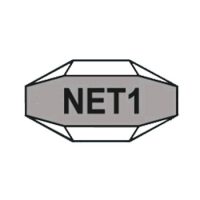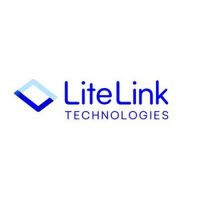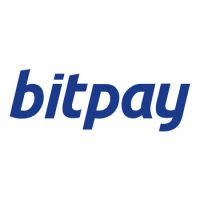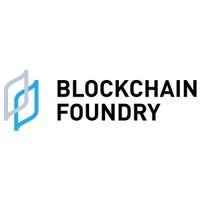Blockchain
Haitong International 3rd AI Conference Draw to Successful Close

Haitong International Securities Group Limited (“Haitong International”; Stock Code: 665.HK) announced a successful completion of its third Haitong International AI Conference (“the Conference”) in Shanghai on 25 November. With “Software and Hardware Technology” as the main theme, the Conference facilitated in-depth discussions and analysis on AI-related software and hardware technology development trends, including semiconductor manufacturing, healthcare, smart transportation etc. The two-day conference has attracted nearly a thousand of AI experts, corporate representatives and investors to participate.
ZHOU Jie, Chairman and Secretary of the CPC Committee of Haitong Securities Co., Ltd, said at the opening remarks, “AI is now achieving technological breakthroughs in unprecedented speed, connecting our world in unprecedented scale, and empowering multiple industries in unprecedented depth. Haitong Securities and Haitong International have long been assisting numerous AI-related software, hardware and application companies to gain access to both China onshore and overseas capital markets, which ultimately propelled the AI technological advancement and application in China. This year marks the third edition of our AI Conference with increased interests and participation from the industry. We hope to continue creating this platform for corporates and experts in the AI space to exchange ideas and facilitate further technology breakthroughs.”
Decoding the era of AI – Technology, Applications, Trends and Opportunities
Lianfeng WU, VP China and Chief Analyst of IDC elaborated in the speech on the landscape evolvement and future opportunities of the AI market in China. He was optimistic about the prospect of the AI market in the future when China and the rest of the world have a huge room of growth. He predicted that China’s AI market size would exceed USD16.3 billion by 2025 in which the software market might see the fastest growth, with CAGR outshooting 35% in 2020-2025. By technology segment, machine learning platform could be the niche market with high growth potential due to a small base currently. Besides, the emerging industrial user construction data middle office and AI middle office will also boost the growth of machine learning platform. By sub-sectors, he predicted that public utilities, medical service and central government might bring great growth, with CAGR close to 25% in 2020-2025. He believed that AI public cloud would become an important disruptive force in the market and public cloud proportion in China’s AI software market would jump from around 10% in 2020 to 36% in 2025.
Wei WU, Chairman of Qingzhirongke and Deputy Head of the Financial instruments expert Group of the Central Bank made a speech on China’s digital currency architecture and briefly introduced the R&D history, technical architecture and challenges of official launching of digital RMB. China was the first to issue digital currency by the Central Bank in the world and is already in a leading position in digital payment with a high penetration rate. Against the backdrop of fast development of encrypted currencies worldwide, China’s development of digital RMB system would promote inclusive finance and improve operation efficiency and security of the whole currency and payment system. The undergoing pivot project is proceeding smoothly but before official launch, some further upgrading to the processing system to improve user experience and a robust security and risk management scheme must be established.
Zhewei WEI, Professor and Ph.D. Supervisor of Gaoling School of Artificial Intelligence, Renmin University of China shared his views on AI algorithms. He introduced the edgy technology development and industrial applications, and pointed out that the development of GPT, Transformer and Graph Neural Networks would enable the humankind to use a larger scale of data, data with more complicated structure and look into the more important part of big data. Going forward, development of AI algorithm still face some challenges, including increased carbon emissions caused by model training, the lack of causal inference and interpretability in deep learning, and ethical and legal regulations.
Jeff WU, Chief Analyst of electronics at Haitong International also shared his views on the latest electronic researches. As per his analysis, semiconductor industry was in a plateau period with sub-sectors diverged. The storage sector had entered a downward circle, thus prices were estimated to see a dramatic drop in 1H2022 while wafer foundry continued to go upward and might see a normalized shortage of supply going forward. In terms of consumer electronics, smart phones were in a sluggish growth period with the market share dynamics coming under the spot light. Looking into 2022, he is positive on the potential of servers and data centers, AR/MR/VR, automotive electronics and domestic substitution of semiconductors.
A bright future for AI – The key is empowerment and integration
Natalie WU, Managing Director of Equity Research at Haitong International, delivered an opening speech on day two of the Conference and shared her thoughts on the value of AI technology development. She thinks that the key to propel the development of the digital sector is integration between industries and technologies such as AI, big data and internet. No matter the company is a niche or sector player in the AI field, or a traditional TMT corporate, they should all think about the application of AI technologies and thereby utilize AI to empower the real economy, optimize business processes, and transform business productivity.
YANG Fan, Co-founder and Vice President of SenseTime, gave a presentation on the AI development trends. He estimated that by 2030, China will become the world’s major AI innovation center, with core AI sector size exceeding RMB 1 trillion, and related industries market size to exceed RMB 10 trillion. Currently, an explosive growth can be seen in terms of demand and application of AI technology in various sectors and areas, and the AI industrial chain is also being more fragmented, with the service ecosystem becoming increasingly comprehensive. Driven by the rise in both supply and demand, innovation supported by general infrastructure and cross-organizational synergized innovation will become the upcoming development trends in the AI sector.
Over 20 sessions hosted by industry experts and corporate representatives were arranged during the two-day conference, in which the corporates included Huawei, SenseTime Group, MetaX. Innoscience etc. delivered sessions covering latest technological advancements and market trends on chips manufacturing, algorithm, self- driving, AI healthcare technologies etc. Two AI roundtable discussions were conducted, which invited corporate representatives from Youdao, Craiditx, Agile Robots, Congtoo and Vlavr etc. to discuss on topics including the latest AI software and hardware ecosystem growth outlook, AI technology integration in various sectors etc.
Alongside the conference sessions, Haitong International also facilitated multiple closed-door small group and one-on-one roadshows for leading corporates in the AI space to communicate with investors, which testifies Haitong International’s rich resources and network in AI and TMT field and the professional capabilities to provide bespoke solutions for clients.
To learn more about the Conference agenda and list of attended corporates, please visit: http://www.hti-aiconference2021.com/
SOURCE Haitong International Securities Group Limited
Blockchain
ONFA Fintech USA Partners with Metti Capital Funding to Accelerate Blockchain Banking and DeFi Expansion

ONFA Fintech USA – feat image
Blockchain
Blocks & Headlines: Today in Blockchain – May 16, 2025

A Pivotal Moment for Blockchain’s Many Frontiers
Today’s briefing arrives at a crossroads in blockchain’s evolution. From AI-driven Layer-1 grant programs to gamified resets in Web3, from supply-chain trust revolutions to exchange-driven token incentives, and high-stakes regulatory leadership shifts, the industry is charting new territory on multiple fronts. As builders, investors, and policymakers navigate this shifting terrain, five stories stand out for their potential to reshape blockchain’s trajectory:
-
Lightchain Protocol AI unveils a $150,000 developer grant program to onboard top builders in AI × blockchain.
-
Blockchain gaming experiences its lowest engagement of 2025, signaling a sector reset toward sustainability.
-
Norwegian Seafood Council research highlights blockchain’s trust-building power in global supply chains.
-
MEXC Exchange announces the Einstein (EIN) listing on July 20, 2025, buoyed by a $50 million rewards event.
-
Summer Mersinger, a US CFTC commissioner, is tapped as CEO of the Blockchain Association, marking a pivotal regulatory turn.
In this op-ed–style briefing, we’ll unpack each development, explore its implications for blockchain, cryptocurrency, Web3, DeFi, and NFTs, and assess how these narratives intersect to define today’s momentum.
1. Lightchain Protocol AI’s $150K Grant: Catalyzing Decentralized Intelligence
What happened: On May 15, 2025, Lightchain Protocol AI—a Layer-1 blockchain optimized for AI workloads—launched its Developer Grant & Ecosystem Incentive Program, pledging up to $150,000 in total funding to on-board teams building dApps, explorers, wallets, analytics dashboards, DeFi protocols, NFT platforms, and AI-powered modules on its network. Grants are milestone-based (up to $5,000 per milestone), accompanied by technical support, co-marketing, and ecosystem visibility. Source: Bitcoin News
Why it matters: Lightchain’s move underscores the growing fusion of AI and blockchain. By allocating resources to builders at the intersection of these technologies, the protocol signals that the next wave of innovation will hinge on intelligent smart contracts, federated learning coordination, and on-chain decision-making. For developers, this grant lowers barriers to entry and emphasizes sustainable, value-driven growth over token speculation.
> “We’re seeking impactful projects that align with Lightchain AI’s goal of bridging AI and blockchain—everything from AI prediction markets to compute marketplaces.” > — Lightchain Protocol AI Core Team
Implications:
-
DeFi & NFTs: Expect AI-augmented lending protocols and NFT platforms with dynamic metadata driven by on-chain models.
-
Ecosystem Growth: Lightchain’s aggressive grant strategy may spur competitors (e.g., Ethereum layer-2s) to bolster their own builder incentives.
-
Governance & Sustainability: The milestone-based approach aligns funding with tangible progress, a model DeFi DAOs may increasingly adopt for resource allocation.
Source: Bitcoin News
2. Blockchain Gaming’s 2025 Low: A “Reset” Toward Quality
What happened: According to Crypto.news, blockchain gaming saw daily active wallets dip to 4.8 million in April 2025—a 10% month-over-month decline and the lowest point of the year for Web3 gaming. Share of the DApp ecosystem for gaming fell to 21%, now tied with DeFi, while AI projects surged to 16% of on-chain activity. Funding also plunged nearly 70% from March to $21 million in April, though Arbitrum Gaming Ventures deployed $10 million from its $200 million fund to support titles like Wildcard, XAI Network, and Proof of Play. Source: Crypto.news
> “Capital is harder to secure, but that’s not necessarily bad. Weak projects are falling away, and funds are flowing into builders laying the groundwork for the next generation of blockchain games.” > — Sara Gherghelas, DappRadar Analyst
Why it matters: The downturn reflects a market recalibration from token-centric models toward user engagement, game mechanics, and interoperability—key for mainstream adoption. High-profile missteps (e.g., Square Enix shelving Symbiogenesis, Sega’s experimental launch of KAI: Battle of Three Kingdoms) contrast with enduring partnerships like Ubisoft + Immutable’s Might & Magic card game.
Implications:
-
DeFi and Gaming Convergence: As DeFi’s share remains steady, expect crossover innovations (e.g., on-chain staking integrated into gameplay).
-
Investor Focus: Sustainable tokenomics over ‘yin-yang’ hype; capital will favor projects with robust retention metrics and revenue models.
-
NFT Utility: Gaming’s reset may accelerate evolution of NFTs beyond collectibles into dynamic, utility-driven assets.
Source: Crypto.news
3. Deepening Trust in Seafood with Blockchain Transparency
What happened: Perishable News reported on May 15, 2025, that the Norwegian Seafood Council found 89% of consumers desire more information on seafood sourcing. Producers are piloting decentralized blockchain solutions to trace products “sea to shop floor,” sharing immutable data on species, harvest location, handling, and quality checks to reassure ethically conscious buyers. Source: Perishable News
Why it matters: While most blockchain discourse orbits finance and gaming, supply-chain applications represent a mass-market use case for Web3. Immutable provenance data combats fraud, illegal fishing, and mislabelling—an urgent concern as global seafood consumption climbs.
Implications:
-
Consumer Engagement: Brands adopting on-chain traceability can premium-price products by verifying sustainability standards, fair labor practices, and environmental impact.
-
DeFi Integration: Tokenized incentives could reward ethical producers or create staking mechanisms for supply-chain stakeholders.
-
Broader Web3 Adoption: Success in seafood may catalyze blockchain tracking in agriculture, pharmaceuticals, and luxury goods.
Source: Perishable News
4. MEXC’s Einstein (EIN) Listing & $50 Million Rewards Event
What happened: PR Newswire announced on May 16, 2025, that MEXC, a leading global crypto exchange, will list the Einstein (EIN) token on July 20, 2025 (UTC). To celebrate, MEXC has launched a $50 million EIN rewards event, offering incentives through trading competitions, referral bonuses, staking pools, and community tasks. Source: PR Newswire
Why it matters: Large-scale rewards events can drive short-term volume spikes and social engagement, but they also test community loyalty and tokenomics viability. EIN’s positioning as a “science-minded” utility token in educational and research partnerships adds thematic depth to what might otherwise be a routine exchange listing.
Implications:
-
Trading & Community Growth: Expect surges in trading volume, potentially setting new ATHs for MEXC’s platform metrics.
-
DeFi Crossplay: EIN holders may see integration into DeFi protocols for governance, liquidity mining, and educational grants.
-
Regulatory Watch: Large-scale token events continue to attract scrutiny over securities classifications and promotional compliance.
Source: PR Newswire
5. Summer Mersinger Becomes CEO of the Blockchain Association
What happened: Gadgets360 reported that on May 14, 2025, the Blockchain Association confirmed that Summer Mersinger, currently a commissioner at the US Commodity Futures Trading Commission (CFTC), will step down on May 30 and begin as the Association’s CEO on June 2. Mersinger has championed balanced, consumer-focused digital asset rules and will spearhead advocacy for fit-for-purpose legislation alongside US regulators. Source: Gadgets360
> “Summer’s knowledge of how elected officials think through complex questions will be vital as we await next steps on stablecoin and market structure bills.” > — Blockchain Association
Why it matters: The appointment bridges regulatory expertise and industry advocacy at a moment when Congress is eyeing stablecoin frameworks and broader crypto oversight. Mersinger’s shift signals a blurring of lines between government and industry, with potential to accelerate law-making and foster public-private collaboration.
Implications:
-
Policy Acceleration: Expect renewed momentum on stablecoin legislation, DeFi disclosures, and market-structure rules by August 2025, per administration timelines.
-
Industry Confidence: Firms may feel emboldened to innovate under clearer regulatory signals, supporting growth in DeFi, NFT marketplaces, and tokenized asset offerings.
-
Global Alignment: US-led regulatory frameworks often influence EU and APAC regimes—this leadership change could ripple through the international policy landscape.
Source: Gadgets360
Conclusion: Five Threads Weaving Tomorrow’s Blockchain Fabric
Today’s headlines paint a multifaceted portrait of blockchain’s ongoing maturation:
-
Ecosystem Incentives: Grant programs like Lightchain’s signal a builder-first ethos, turbocharging AI × blockchain synergy.
-
Quality Over Hype: Gaming’s dip reflects a necessary market reset, steering capital to sustainable, engagement-driven projects.
-
Real-World Utility: Supply-chain transparency demonstrates blockchain’s power beyond finance, enhancing consumer trust.
-
Tokenomics in Motion: Exchange listings and rewards events underscore the ever-evolving interplay between liquidity, community, and utility.
-
Regulatory Convergence: Leadership moves like Mersinger’s appointment highlight the tightening feedback loop between policymakers and the Web3 sector.
As blockchain, cryptocurrency, Web3, DeFi, and NFTs continue to intersect, today’s developments underscore a pivotal shift: the industry is moving from speculative frontiers to pragmatic, real-world applications—backed by funding, governance, and policy frameworks that prioritize longevity and trust. Keep these threads in mind as we watch the next chapters unfold.
The post Blocks & Headlines: Today in Blockchain – May 16, 2025 appeared first on News, Events, Advertising Options.
Blockchain
Saudi Arabia Loan Aggregator Market Report 2025: Retail Digital Payments Hit 70% as Tech Adoption Transforms Saudi Financial Services – Competition, Forecast & Opportunities to 2030
Saudi Arabian Loan Aggregator Market
-

 Blockchain Press Releases6 days ago
Blockchain Press Releases6 days agoBullish partners with the Gibraltar Government and GFSC to pioneer world’s first crypto clearing regulation
-

 Blockchain Press Releases4 days ago
Blockchain Press Releases4 days agoFintica AI and Mima Wallet Announce Strategic Partnership and Launch Joint Venture, Fintica Crypto Ltd
-

 Blockchain7 days ago
Blockchain7 days agoBlocks & Headlines: Today in Blockchain – May 12, 2025 | Rootstock, Zimbabwe Carbon Registry, Fastex, 21Shares, The Blockchain Group
-

 Blockchain4 days ago
Blockchain4 days agoBDM Digital Initiates Promising Dialogue with Stanford Law School in Pursuit of Strategic Partnerships in Silicon Valley
-

 Blockchain4 days ago
Blockchain4 days agoBlocks & Headlines: Today in Blockchain – May 15, 2025 (BTC’s Push, Pi Network Fund, Stablecoin Levers, JPM Pilot, OKX × Man City)
-
Blockchain3 days ago
Wen Acquisition Corp Announces the Pricing of $261,000,000 Initial Public Offering
-

 Blockchain Press Releases7 days ago
Blockchain Press Releases7 days agoBybit Introduces BOB to P2P: Bolivian Traders Can Now Buy, Sell in Local Currency and Earn Commissions
-
Blockchain3 days ago
Mercurity Fintech’s Subsidiary Grows Cross-Border Business Advisory Services with New Asia-Pacific Healthcare Client Engagement
































